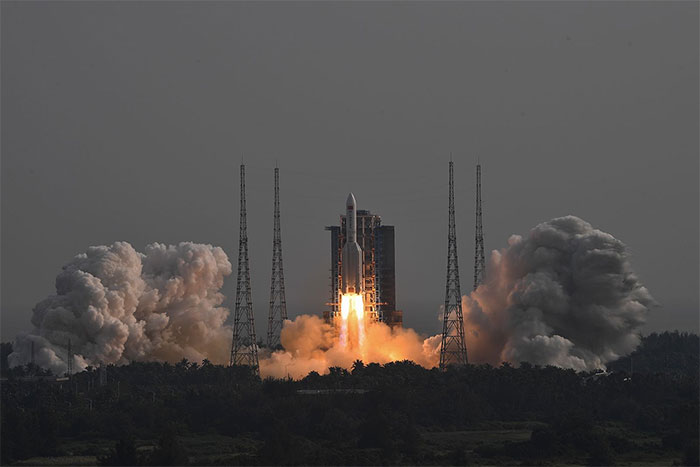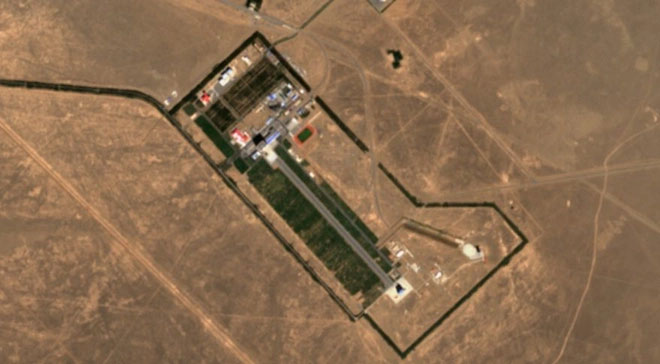A Chinese experimental spacecraft has just launched an unidentified object into orbit, which could be a surveillance satellite or a support module.
Data from the U.S. Space Force indicates that China’s reusable spacecraft has released an object into orbit. This spacecraft was launched by a Long March 2F rocket from the Jiuquan Satellite Launch Center in the Gobi Desert on August 4.

Long March 5B rocket carrying the Mengtian laboratory module launched on October 31. (Photo: AP).
According to SpaceNews, the Chinese spacecraft has been in orbit for 90 days. At the end of October, the spacecraft raised its perigee to transition to a near-circular orbit.
The Space-track.org database detected an object with a similar orbit to the spacecraft on October 31, approximately 200 meters away. The launch window for the object is predicted to be between October 24 and 31.
It is not yet possible to accurately analyze what the launched object is. The Chinese space agency has not provided updates or images regarding the mission, other than the announcement of the spacecraft launch in August.
It is likely that the object is a small satellite for monitoring the spacecraft. Previously, Chinese crew members have deployed the “Banxing” satellite for monitoring purposes.
Meanwhile, Jonathan McDowell, a satellite tracking expert at the Harvard-Smithsonian Center for Astrophysics, predicts that this could be a support module for the spacecraft.
There is limited information about China’s reusable spacecraft project. The space agency has only disclosed two missions after launching the spacecraft into orbit. By the end of October, the project was funded by the National Natural Science Foundation of China.
In mid-August, the Twitter account CNSA Watcher shared a video purportedly showing debris from the Long March 2F rocket launch, displayed at a school in Henan (China).

Jiuquan Satellite Launch Center, captured by Sentinel-2 satellite. (Photo: Copernicus Sentinel).
According to the China Academy of Launch Vehicle Technology (CALT), the project will support the development of science and technology, enhance China’s aerospace and transportation capabilities, and provide practical value in social, technological, economic, and other applications.
It is currently unclear how long the Chinese experimental spacecraft will remain in orbit. Based on the first launch, the spacecraft is likely to land in the Lop Nur desert in Xinjiang. According to orbital analysis, the spacecraft will pass over Lop Nur approximately every three days, potentially landing at night local time.
Other Chinese space projects and reusable spacecraft include the Tengyun project by the China Aerospace Science and Industry Corporation (CASIC), alongside a hypersonic spacecraft project that raised over $46 million last year from Space Transportation.

















































